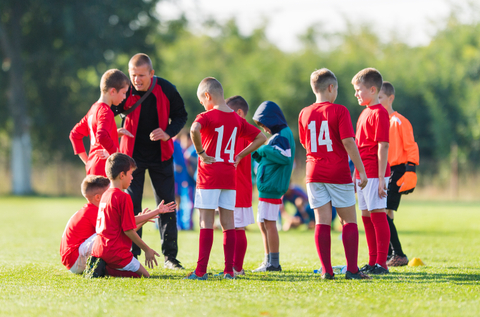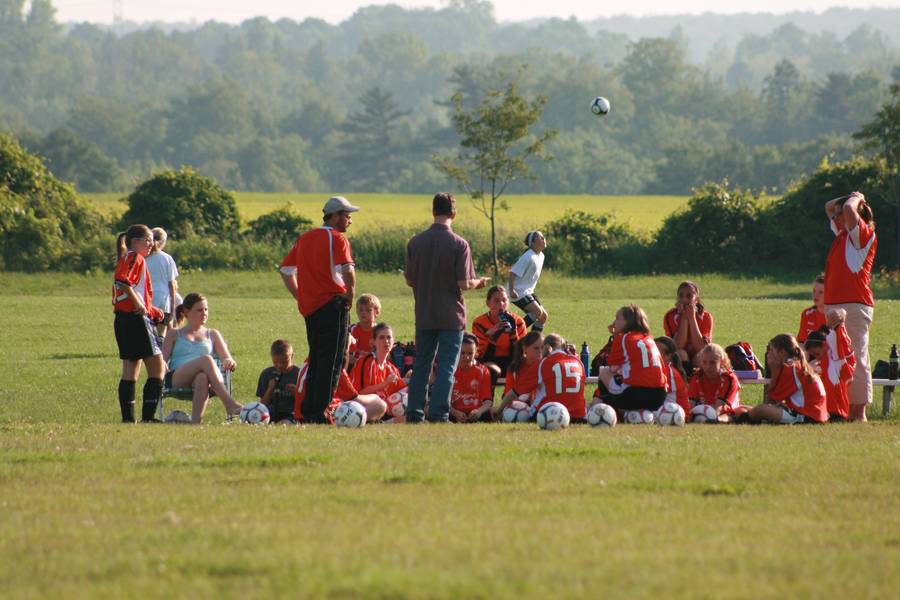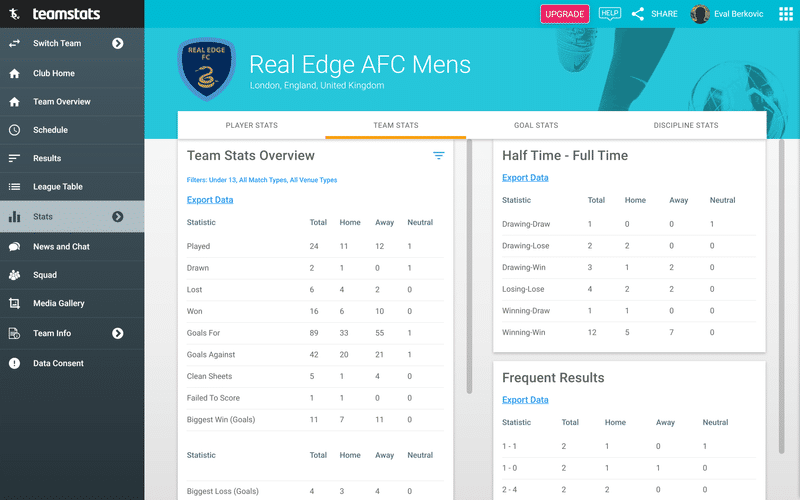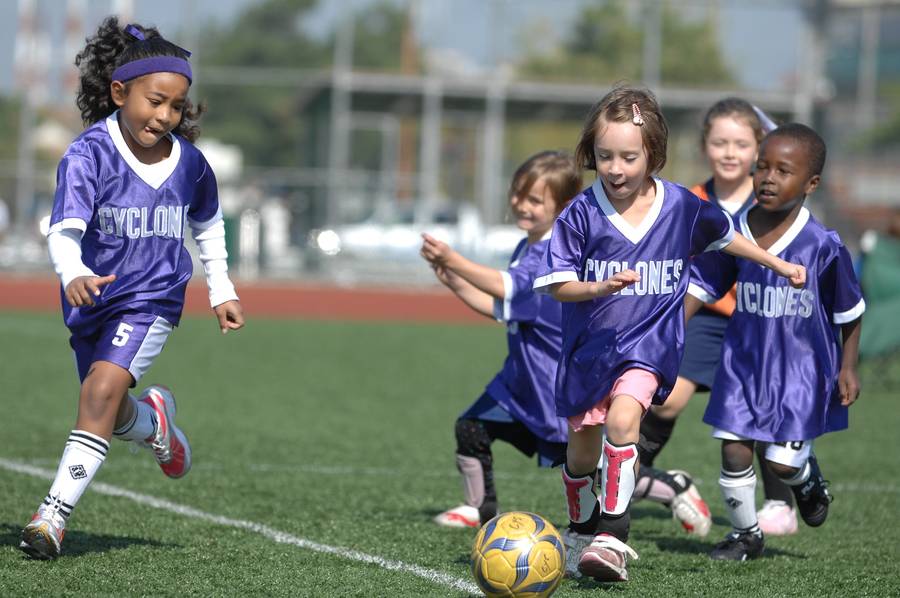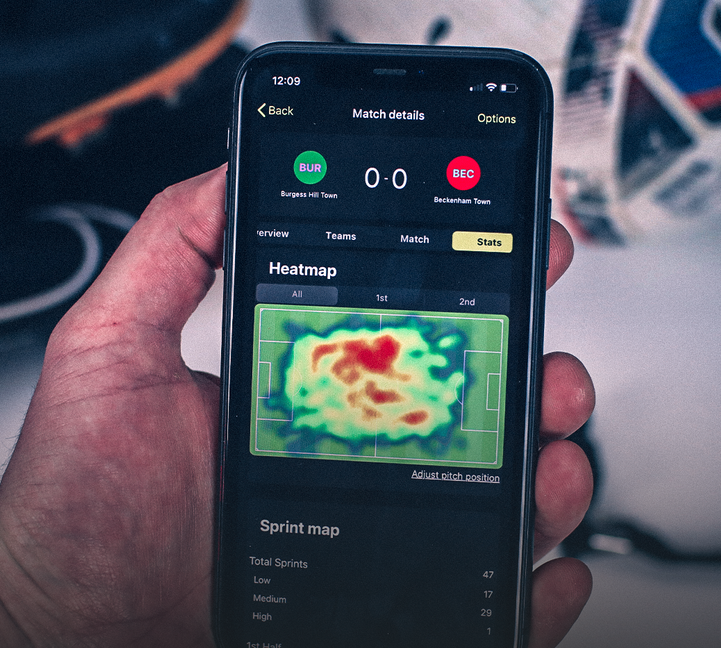
We know that Football is an intense and physically demanding sport, and while training and skill development are crucial, recovery can be just as important. Without proper recovery, young players are at risk of injuries that could hinder their progress and potentially impact their playing careers.
Recovery is essential for muscle repair, reducing fatigue as well as improving overall performance.
Young players often focus heavily on training but may overlook the importance of allowing their bodies to heal and regenerate. Proper recovery routines help prevent overuse injuries, enhance performance and ensure long term physical development.
A well balanced diet plays a crucial role in recovery. Young players should focus on consuming protein for muscle repair and growth, carbohydrates to replenish glycogen stores depleted during training, healthy fats to support overall health and reduce inflammation and maintaining proper hydration to prevent cramps and aid muscle recovery. Players should drink water consistently throughout the day and consider electrolyte rich drinks after intense sessions. Timing is also key, with post-training meals and snacks helping to kickstart the body’s repair process.
And whilst this all might seem like overkill for a young players at grassroots level, we’re ultimately talking about the physical health and wellbeing of the next generation and few things are as important as that.
The implementation of evidence-based recovery strategies in grassroots football need not require substantial resources, but it does demand a shift in priorities and education. Rather than viewing recovery as an elite luxury, grassroots leaders must recognise it as fundamental infrastructure supporting everything else in player development. This perspective shift starts with coach education, where knowledge of recovery principles should receive attention alongside tactical and technical instruction. It extends to parent education, empowering families to support optimal recovery practices at home. Most importantly, it includes player education, developing self-management skills that will serve young footballers throughout their sporting journey, whether that leads to professional academies or lifelong recreational participation. By integrating recovery science into grassroots practice, we create environments where young players can truly realise their potential, enjoy their football experience, and develop sustainable habits that contribute to both sporting excellence and overall wellbeing. The grassroots game, with its inherent resource limitations but tremendous heart, may never match the recovery facilities of professional academies, but through education, creativity, and commitment to best practices, it can provide young players with the recovery foundations that allows them to flourish.
For instance, whilst young players are encouraged to practice and practice consistently hard, we also know that overtraining can lead to burnout and injuries, so coaches and parents need to ensure that young players have adequate rest days, follow structured training schedules and avoid excessive playing time across multiple teams. Periodisation, or planning training time in cycles, can help balance workload and recovery, ensuring players peak at the right times while avoiding exhaustion.
Recovery strategies should also be tailored to individual needs, taking into account factors such as growth spurts, previous injuries and playing positions. Ice baths, compression therapy, and sports massages are used by elite athletes but can also benefit young players when used appropriately.
However, the most effective recovery tools remain proper nutrition, hydration, rest and balanced training loads which are much easier to implement and manage.
Rest and sleep are also fundamental to recovery. Sleep is when the body undergoes the most significant repair and regeneration processes and young footballers should aim for eight to ten hours of quality sleep per night. Lack of sleep can lead to slower reaction times, increased injury risk and reduced performance. Developing a consistent sleep routine, avoiding screens before bed (easier said than done!) and ensuring a comfortable sleeping environment can all improve sleep quality.
Active recovery involves low-intensity activities that promote blood circulation and muscle relaxation, such as light jogging or cycling and flexibility exercises, foam rolling to reduce muscle tightness and dynamic and static stretching to improve flexibility and mobility. Recovery does not always mean complete rest as movement based recovery techniques help maintain mobility and prevent stiffness.
The science tells us that physiological demands of football on young bodies are substantial and multifaceted. During a typical match, players may cover up to 3-5 miles, comprising hundreds of accelerations, decelerations, changes of direction, jumps and sprints. These activities place stress on multiple energy systems, from the phosphocreatine system powering explosive movements to the aerobic system sustaining lower-intensity running. Muscular damage occurs through both metabolic and mechanical pathways from specific football movements like deceleration and landing.
Inflammation develops as the body's natural response to this damage, initially hampering performance but ultimately facilitating repair when properly managed. Meanwhile, glycogen stores naturally become depleted, particularly in the specific muscle fibres most heavily used during play.
Central nervous system fatigue accumulates through the continuous decision making and skill execution demands. Even with the shorter match durations in youth football, these physiological stresses remain significant, especially considering that young players often participate in multiple activities throughout the week, creating a complex fatigue profile that can take 48-72 hours to fully resolve.
Understanding this recovery timeline reveals why many grassroots players never reach their optimal performance state. A typical young player might have a game on Sunday, school PE on Monday, club training on Wednesday, with perhaps additional school teams or other sports squeezed between which creates a perpetual state of incomplete recovery. Research from the University of Bath examining youth football players found that performance markers like sprint speed, jump height and skill execution accuracy remained compromised for up to three days following competitive matches in the absence of targeted recovery interventions. This physiological reality creates a challenging situation in that the very activities intended to develop players may, through accumulated fatigue, be limiting their development potential if recovery is inadequate.
Nutrition stands as perhaps the most powerful recovery tool available to grassroots players, yet it remains woefully underutilised. The post-exercise recovery window, particularly the first 30-60 minutes, represents a period of heightened physiological receptivity where the right nutritional intake can significantly accelerate restoration processes. Research consistently demonstrates that consuming approximately 1-1.2 grams of carbohydrate per kilogram of body weight within this window substantially enhances glycogen replenishment, with the addition of 15-25 grams of quality protein stimulating muscle protein synthesis to repair damaged tissues. For a typical 50kg youth player, this translates to a recovery meal or snack containing roughly 50-60 grams of carbohydrate and 20 grams of protein which are proportions found in something as accessible as a chicken sandwich with a banana and yoghurt, or a milk based smoothie with oats and fruit. The practical challenge in grassroots settings often isn't knowledge but logistics. Players rush home after evening training, sometimes with long travel times or face extended waits after weekend matches without access to appropriate foods.
Finding a creative solution to get the right food into children when they’ve finished playing transforms recovery from an elite luxury to a grassroots essential.
Hydration, closely linked to nutritional strategies also merits specific attention given that even mild dehydration (as little as 2% body mass loss) can impair both physical performance and cognitive function.
Integrating effective recovery strategies, ensures that young footballers remain fit, healthy, and ready to excel on the pitch. Understanding that recovery is a long term necessity rather than a short term fad will help young players develop habits that will serve them throughout their football careers and beyond.


